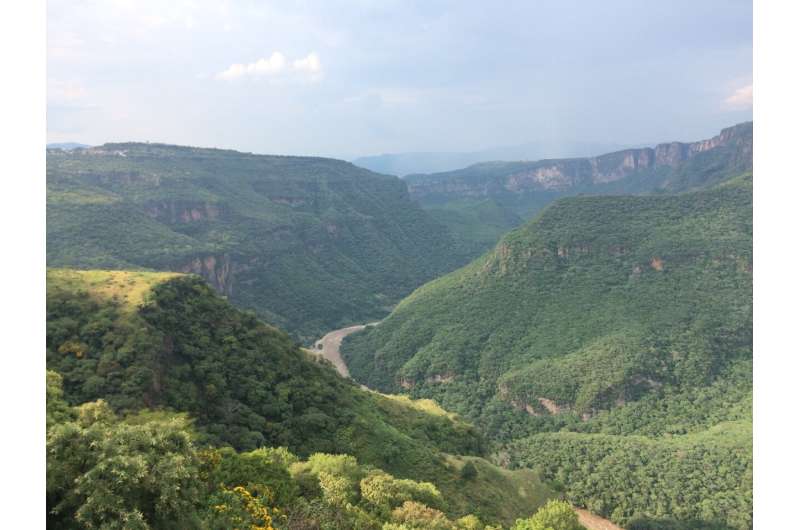This article has been reviewed according to Science X's editorial process and policies. Editors have highlighted the following attributes while ensuring the content's credibility:
fact-checked
trusted source
proofread
Critical habitats at risk: Three-quarters of vegetation types in the Americas are under-protected

A study published in Global Ecology and Conservation has found that three-quarters of the distinct habitats in North, Central, and South America fall below the Global Biodiversity Convention's target of 30% protection.
The research led by the German Center for Integrative Biodiversity Research (iDiv) and Martin Luther University Halle-Wittenberg (MLU) also highlights that more than 40% of threatened bird and mammal species are mostly found in a single vegetation type, putting them at risk for extinction if these critical habitats remain unprotected.
The Americas are home to some of the world's most biologically diverse regions, yet they are confronted with significant challenges due to habitat loss and degradation. While substantial protected areas exist, many smaller, yet crucial habitats within these landscapes remain unprotected.
Despite the protection of large habitats, the specific needs of many species, especially those that are rare, specialized, and threatened, are often overlooked by broader habitat categorizations, leaving them vulnerable to habitat loss and degradation. Detailed fine-scaled habitat assessments at localized scales are essential to identify and protect critical habitats for species in the region.
To address this gap, a team of researchers led by iDiv and MLU conducted a comprehensive continent-wide analysis. Their study integrated fine-scale habitat maps, utilizing the International Vegetation Classification (IVC) system, which encompasses more than 300 vegetation types classified by unique plant communities and local environmental conditions.
The research team also utilized the highest-resolution species distribution maps available for more than 6,000 bird and mammal species. They then identified critical vegetation types by developing a conservation value index that incorporated the distribution of threatened species, habitat-associated species, current protection levels, and projected future threats across the Americas.
"Fine-scale vegetation mapping allowed us to pinpoint the localized vegetation types that harbor disproportionately high numbers of specialized species," said first author Lea Schulte from Leibniz University Hannover. "This level of precision is critical for effective conservation planning."
The study found significant differences in the level of protection between vegetation types, with nearly three-quarters of assessed vegetation types currently below the Global Biodiversity Convention's 30% protection target. Additionally, 20% of assessed bird and mammal species had at least half of their habitat range within a single vegetation type. Alarmingly, this included more than 40% of all threatened species, emphasizing the importance of targeted efforts to conserve these vegetation types.
"Our study demonstrates the value of finer-scale, localized habitat assessments, which reveal vulnerabilities often overlooked in broader classifications," stated senior author Dr. Jose Valdez from iDiv, MLU. "By identifying key vegetation types vital for threatened and specialized species, we can implement tailored conservation strategies to protect biodiversity."
Priority areas identified included the species-rich Northern Andean montane forests and Central American highlands, Brazil's Cerrado savanna and Atlantic Forest, and the Caribbean islands. However, the study found these critical areas remain dangerously under-protected and highly threatened by human activities.
The researchers emphasize that reaching global 30% protection targets requires comprehensive approaches encompassing habitat diversity, not just area-based goals. They advocate for expanded efforts to map critical vegetation types and species distributions, which can inform precise conservation planning when combined with emerging land use threats.
"This study not only emphasizes the urgent need for conservation action in the Americas but also provides a comprehensive blueprint for identifying at-risk habitats globally," said Schulte. "By utilizing a flexible framework, we can effectively identify critical vegetation types that support threatened biodiversity and vegetation-associated species. This enables us to efficiently mobilize resources and prioritize the protection of areas where they are most critically needed."
More information: Lea Schulte et al, Identifying critical vegetation types for biodiversity conservation in the Americas, Global Ecology and Conservation (2024). DOI: 10.1016/j.gecco.2024.e02831



















